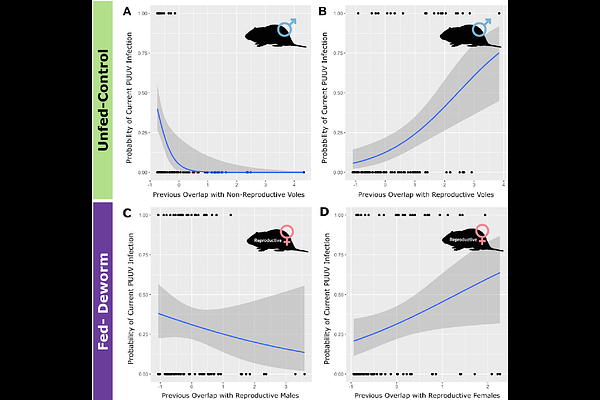Ecological factors alter how spatial overlap predicts viral infection dynamics in wild rodent populations

Ecological factors alter how spatial overlap predicts viral infection dynamics in wild rodent populations
Mistrick, J.; Veitch, J. S.; Wearing, K. E.; Kitchen, S. M.; Clague, S.; Du, S.; Michalska-Smith, M.; Newman, B. C.; Sironen, T.; Cressler, C. E.; Hall, R. J.; Budischak, S. A.; Forbes, K. M.; Craft, M. E.
AbstractSpatial overlap between animals in wildlife populations can have important implications for pathogen transmission. Ecological factors and animal demographic traits can influence animal space use and spatial overlap, but it is unclear how these interactions drive pathogen transmission. We experimentally manipulated wild bank vole populations via resource supplementation and anthelmintic treatment. Using network analysis, we investigated the relationship between spatial overlap and infection probability of an endemic zoonotic hantavirus, including how vole sex and reproductive status interact with spatial behaviour to affect infection probability. Spatial overlap in a previous month drove current hantavirus infection probability, and food supplementation and anthelmintic treatment altered the effects of spatial overlap on infection probability. Vole sex and reproductive status were important factors determining whether spatial overlap increased or decreased the probability of hantavirus infection and interacted with resource supplementation and anthelmintic treatment, generating different infection dynamics in each treatment. Our research provides rare empirical evidence linking previous spatial overlap to current infection status in wildlife populations, with implications for understanding zoonotic exposure risk for humans. We further highlight the importance of incorporating variation in ecological factors and host demography when studying pathogen transmission in wildlife systems.